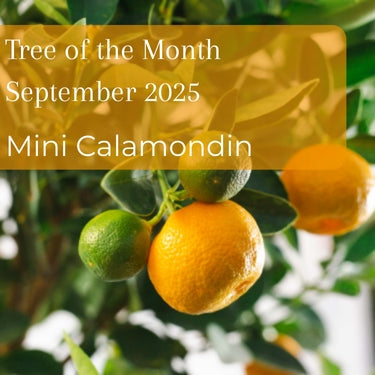How to Care for Blackberry, Raspberry and Loganberry Plants
Berry Quick Facts:
-
Latin name: Rubus fruticosus/Rubus idaeus/Rubus × loganobaccus
-
Hardiness: Fully Hardy. Suitable for growing across the UK and Ireland.
-
Pollination: Self-fertile
-
Height and spread: 1.5m
-
Flowering: Spring
-
Harvesting: Summer/Autumn
-
Difficulty: Easy
 Blackberries and raspberries are so closely related that the only way to easily tell them apart is by the stem. When you pick a blackberry, the stem, also known as a torus, stays with the fruit. With a raspberry, the torus is left behind, creating a hollowed-out fruit.
Blackberries and raspberries are so closely related that the only way to easily tell them apart is by the stem. When you pick a blackberry, the stem, also known as a torus, stays with the fruit. With a raspberry, the torus is left behind, creating a hollowed-out fruit.
Created in 1881, the loganberry is the result of cross-breeding between the blackberry and raspberry. It is dark purple when ripe, elongated in shape and tastes similar to a raspberry but grows more vigorously.
All of our berry bushes are thorn free varieties, which make harvesting a much more enjoyable process!
Planting
Plant your berry bush when it's dormant and the roots are not growing. Either September/October or late February/March as the ground can become frozen solid in intervening months. Choose a planting site that gets plenty of sunshine but is sheltered from strong winds and frost: all berry plants need sunshine to ripen their fruit. All these berry varieties will do best if planted into moisture-retentive, free-draining fertile soil.
An hour before planting your berry plant, water the pot thoroughly. Remove the plant from its container and gently tease out the roots. Prune any that are damaged or broken. Dig a hole roughly three times the width of the plant's roots, but no deeper. Incorporate a bucket of well-rotted organic matter. Plant the berry bush before backfilling any gaps with the soil mix you removed earlier.
Repotting
All our berry varieties can also be grown in pots. They will require repotting into a large deep container with drainage holes in the first 12 months, so look out for the following signs that your plant is ready for a new home:
-
Does your plant look less healthy than it used to?
-
Does it seem to dry out quicker?
-
Are there roots growing out of the holes in the bottom of the pots?
-
Has the berry bush been in the same pot for three years or more?
Some tips for repotting:
-
The soil in the berry pot should be slightly moist; water thoroughly an hour before repotting to achieve this.
-
Loosen the soil around the edge of the plant and pull it out by the base of the main stem.
-
Add some pebbles or broken terracotta pieces to the bottom of the pot for drainage, soil into the bottom of the pot before you insert the plant, then fill in with good quality potting compost.
-
Water the plant thoroughly, and keep it well watered for several weeks.
Mulching
 Mulching is the term used for the layer of organic material that's placed on top of the soil around your plants and should be carried out every year on berry bushes grown in the ground as opposed to in pots. It has a whole host of benefits, including keeping the soil moist and nutrient-rich throughout summer and discouraging weeds. The best time to do this is in late spring (April-May) or autumn (October).
Mulching is the term used for the layer of organic material that's placed on top of the soil around your plants and should be carried out every year on berry bushes grown in the ground as opposed to in pots. It has a whole host of benefits, including keeping the soil moist and nutrient-rich throughout summer and discouraging weeds. The best time to do this is in late spring (April-May) or autumn (October).
First, prepare the ground by removing debris and weeds and water the surface of the soil if it is dry. Apply a thin layer of well-rotted manure or good garden compost all around the tree - we suggest using John Innes No. 3. Try to ensure that the mulch doesn’t come into contact with the plant as this can cause rot.
Feeding
Feed berry bushes in spring with a general-purpose fertilizer according to packet instructions.
Watering
Try to ensure that berry bushes receive a steady supply of water in spring and summer; it is essential for the growth of fruit. We advise watering deeply once every couple of weeks, and once a week if the weather is particularly hot or dry.
Remember, when fruiting plants are grown in containers, they will have more restricted access to water than those growing in the garden. so will need watering with greater regularity.
Pruning
 All berry bushes grow long cane like stems, which can easily get out of control without proper pruning and training. If you're planning to plant your berry bush in the ground, we would advise setting up a system to train the bush first. A wireframe or fence will work a treat and can be picked up cheaply from good DIY stores or garden centres.
All berry bushes grow long cane like stems, which can easily get out of control without proper pruning and training. If you're planning to plant your berry bush in the ground, we would advise setting up a system to train the bush first. A wireframe or fence will work a treat and can be picked up cheaply from good DIY stores or garden centres.
Potted blackberry and loganberry canes will also grow best if given support; place the pot up against a trellis or fence, or plant a few sturdy stakes into the soil of the pot.
Blackberries and loganberries fruit on two-year-old wood, so always keep this in mind when pruning - you don’t want to prune all your fruit away! The best time to prune your berry bush is in winter when the plant is dormant.
Every year, choose the strongest looking canes and tie them to the trellis, which will provide them with the support they need and keep fruiting canes off the ground. Cut out weaker and damaged canes to keep the bush from getting overcrowded.
Try to keep one-year-old growth and two-year-old growth separated to make picking and pruning a simpler job. For example, you could tie all new growth to the higher wires of the trellis one year, and lower wires the next year.
After canes have finished fruiting, cut them out completely, right down to the ground,
Fruit and Flowers
As soon as the fruit begins to appear on your berry bush, it would be a good idea to invest in a fruit cage or fruit netting to deter birds, who will happily devour all your lovely fruit if you let them! Raspberries and loganberries will be ready in July and August, while blackberries will be ready for picking in late August and September.
Berries are lovely versatile fruit that delicious for everything from baking into cakes and pies to eating fresh and making into sweet and sour jams.
Winter Care
All these berry plants are deciduous and will go into dormancy over winter and lose all their leaves - this is normal!
Berries are fully hardy plants that should not require winter protection unless conditions are very extreme.


